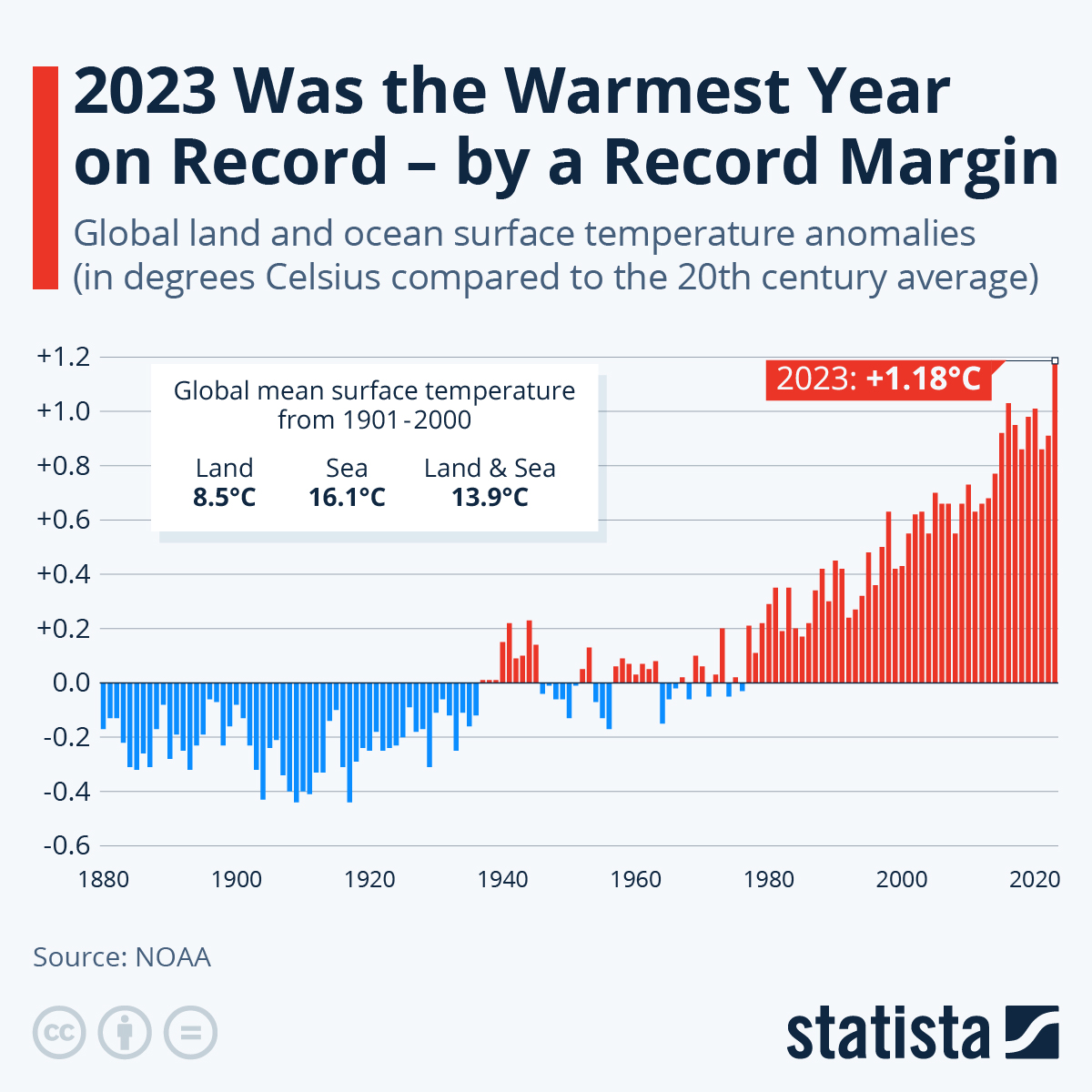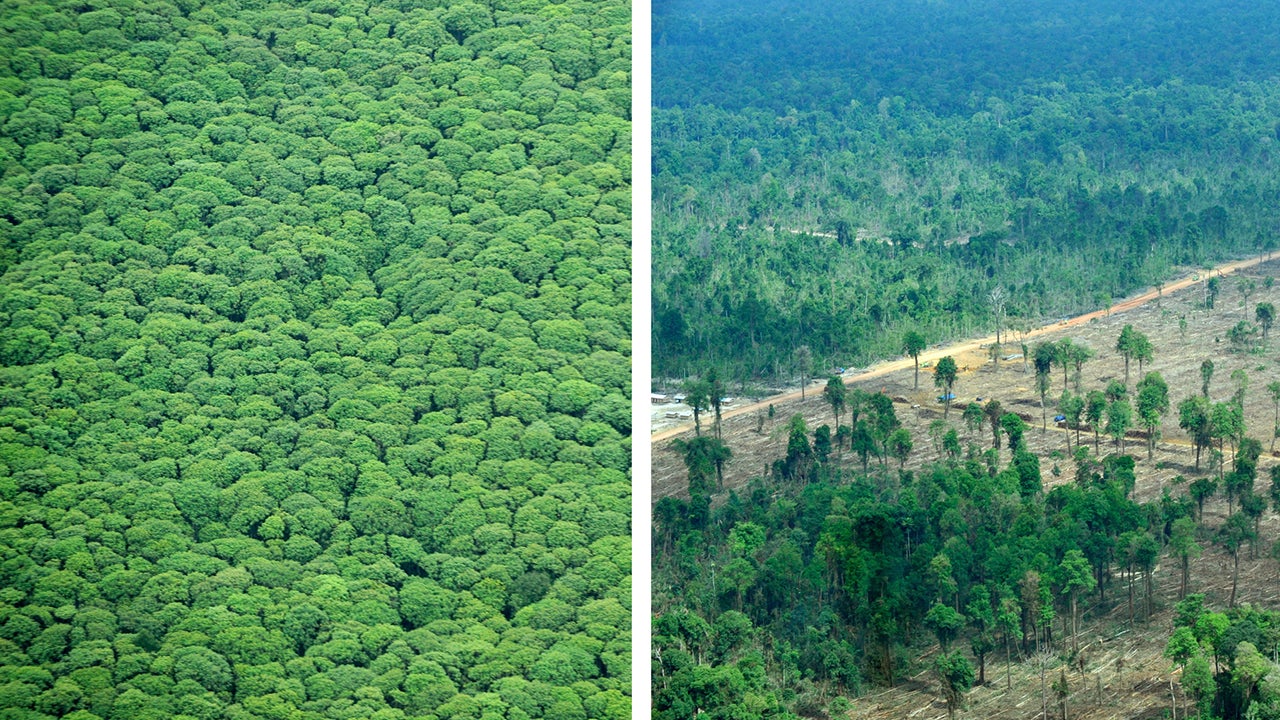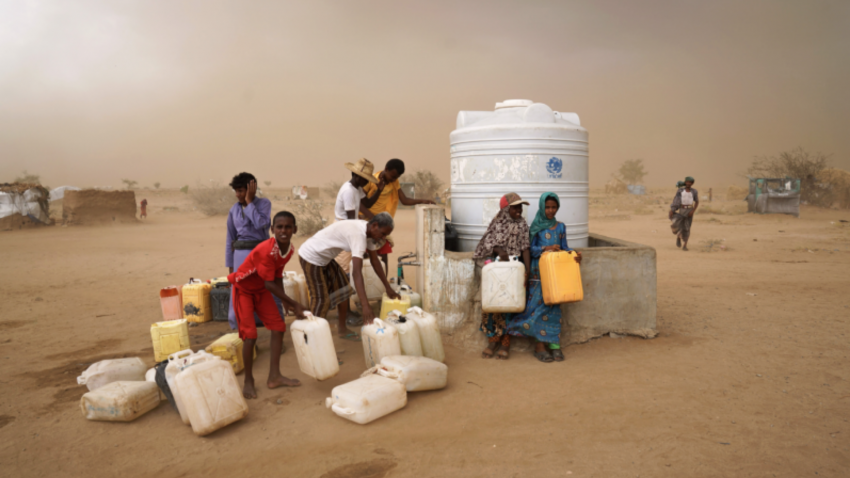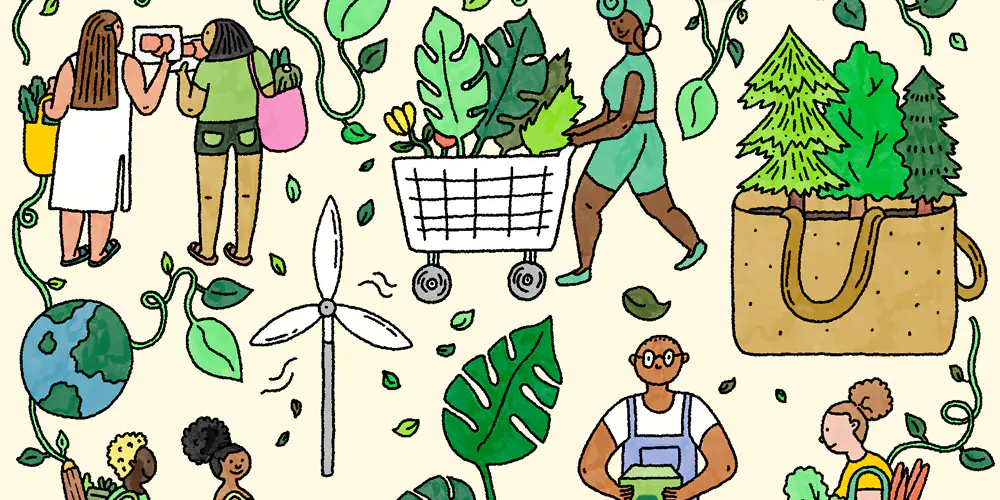Understanding Climate Change

Confirming earlier, preliminary reports, the National Oceanic and Atmospheric Administration (NOAA) announced that 2023 was in fact the warmest year on record (since 1850). And it's not just that 2023 beat the previous temperature record, it did so by a record-breaking margin, as 2023 was 0.15 degrees Celsius warmer than 2016, the previously hottest year. Earth’s average land and ocean surface temperature in 2023 was 1.18 degrees Celsius (2.12 degrees Fahrenheit) above the 20th-century average of 13.9 degrees Celsius (57.0 degrees Fahrenheit), according to research conducted by NOAA’s National Centers for Environmental Information.
The 10 warmest years since 1850 have now all occurred in the past decade, as global mean surface temperatures (land and sea) diverged 0.77 to 1.18 degrees Celsius from the 20th century average between 2014 and 2023. And it's unlikely that the planet's hot streak will come to an end this year. According to NOAA, there's a one-in-three chance that 2024 will be warmer than 2023 and a 99-percent chance that 2024 will be among the five warmest years.
It has now been 47 years since Earth had a cooler-than-average year in 1976, as temperatures have diverged upward from the 20th century average in 48 of the past 50 years. Conversely, just 5 of the the first 90 years of the observance period (i.e. 1850-1939) saw global surface temperatures above the 20th century average of 13.9 degrees Celsius.
“After seeing the 2023 climate analysis, I have to pause and say that the findings are astounding,” NOAA Chief Scientist Dr. Sarah Kapnick said in a statement. “Not only was 2023 the warmest year in NOAA’s 174-year climate record - it was the warmest by far. A warming planet means we need to be prepared for the impacts of climate change that are happening here and now, like extreme weather events that become both more frequent and severe."
Environmental Consequences

In the 1950s, two alien machines were introduced to the forests of Borneo, changing the island forever: the chainsaw and the caterpillar tractor. Since then, illegal logging has become all too familiar for those in Borneo, causing devastating damage to one of the most biologically diverse habitats on Earth.
According to the World Wide Fund for Nature (WWF), between 1985 and 2001, illegal logging decimated 56 percent of lowland tropical rainforest in the Indonesian territory of Kalimantan. That equates to more than 18,000 square miles of rainforest.
As in many tropical places, deforestation threatens Borneo due to logging, land-clearing and conversion activities. Palm oil plantations are one of the biggest threats to these rainforests. Borneo and Malaysia produce about 90 percent of the world’s palm oil supply. Palm oil is the cheapest vegetable oil, and consumption of the oil is expected to increase rapidly in upcoming years, WWF reports. In fact, the Indonesian government has responded to increasing food demands by proposing to double the 2009 production of more than 22 million tons of palm oil by 2020.
The looting of Borneo didn’t start with palm oil, and it doesn’t end there either. Humans have had a long and complicated history with the island. Chinese traders traveled to Borneo for rhinocerous horn as well as timber, National Geographic reports. Muslim and Portuguese traders were interested in the island’s pepper and gold. In the 19th and 20th centuries, loggers began to flood Borneo. Europe, the United States and Australia have been drilling for oil and natural gases in Borneo for decades. Coal minining is also currently a threat, as it pollutes local rivers.
Protection ordinances in the area often don’t work because they are inadequate or violated without legal consequence. But the environmental consequences are dire. According to WWF, deforestation accounts for up to 20 percent of global manmade carbon dioxide emissions. Borneo, which is only slightly larger than Texas, currently places third in greenhouse gas emissions, right behind China and the U.S., according to National Geographic. At the current rate of Borneo’s deforestation, the island risks major flooding and forest fires, human health impacts, changes in agricultural yields and damage to infrastructure due to climate change.
Borneo is home to many endangered species. Large animals such as elephants and orangutans are directly affected as the large areas of forest they require for survival diminish. In addition, road construction through protected areas provides easy access to some of the more remote regions of remaining rainforest, making poaching easier.
Humanitarian Crisis

Climate change is a top driver of humanitarian need and human suffering, particularly for the poorest countries. The impacts threaten to deepen already wide inequalities, resulting in consequences felt by the world at large, including instability, violence and displacement.
In a recent speech on humanitarian policy, the UN Under-Secretary-General for Humanitarian Affairs, Mark Lowcock, made the case for action to support the world’s most vulnerable communities, stressing that in 2020, 12 of the 20 countries most vulnerable to climate change had an inter-agency humanitarian appeal. He detailed ongoing and destabilizing fallout from pressures on livelihoods, water, food and health, among other issues.
“Humanitarian aid can only be a temporary band-aid – and a woefully small one at that. We need leaders around the world to take smarter decisions and make smarter investments today,” he said, offering some priorities.
First, scale up adaptation finance to prevent, prepare for, and respond to growing humanitarian crises, and to make communities more resilient.
Second, many countries are getting better at responding to climate-related disasters; the number of people killed by disasters globally has steadily declined. The world needs to continue and scale up investment in preparedness, early warning and resilience-building strategies.
Third, leaps forward in science and technology continue to improve predictions of climate-related crises, shaping anticipatory actions and allowing faster action when disaster is about to strike.
Fourth, the most vulnerable countries need greater access to contingency finance and insurance for rapid response and recovery at a larger scale.
Fifth, overlapping vulnerabilities need to be reflected in the operations of international financial institutions. As a recent IMF and World Bank report recognized, a combination of debt burdens, climate change and environmental degradation as a “systemic risk to the global economy.”
Lowcock stressed that there are far more solutions out there. “Researchers and organizers in the most vulnerable countries will have far more innovative and wise ideas than I for how to mitigate and adapt to the risks of climate change,” he concluded. “The world should listen to them.”
Transitioning to Renewable Energy

Energy is generated in a few different ways. For about the last 200 years, since the days of the Industrial Revolution, people have been producing energy with fossil fuels. Unfortunately, this option is not ideal for the environment, and it’s becoming increasingly expensive.
Solar power is highly versatile and can be used in many applications. You can even heat and cool your home with solar energy. Now, many home and business owners are making the shift from fossil fuels to solar energy. Are you wondering if it’s time you got your energy from solar power? Here are the benefits of solar energy and why it’s time to make the switch.
Solar power is a renewable form of energy. If solar panels spend all day soaking up the sun’s rays to create energy, they can do it again the next day, the day after that. Although the equipment may need to be replaced at some point, the sun comes back out every day, and by extension, this type of renewable energy. Although some challenges exist, as photovoltaic solar technology improves, collecting and generating solar energy continues to get easier.
In contrast, fossil fuels are a non-renewable energy source. The earth has a finite supply of fossil fuels, meaning that at some point, the world will run out. Based on current consumption rates, estimates claim the earth will run out of oil and natural gas in 50 years, and coal in 100 years. To avoid getting to this point, businesses and consumers should make the switch from fossil fuels to renewable energy sources now.
Burning fossil fuels to produce energy creates carbon dioxide. This byproduct gets trapped in the atmosphere, causing the earth to retain heat. Ultimately, this contributes to global warming and climate change. Solar energy, on the other hand, does not produce harmful carbon emissions.
When you use solar energy, you don’t pollute the air or produce carbon dioxide. The process has a minimal impact on the environment and opting for solar power helps to protect the planet from the harmful effects of climate change.
As of 2018, energy generated by solar power costs an average of $0.10 per KwH, while fossil fuels cost an average of $0.05 to 0.17 per KwH. Coupled with the addition of the cost of equipment, the expense of switching to solar was out of many homeowners’ budgets. However, the cost of solar photovoltaic technology decreased by 73% between 2010 and 2018. As a result of this downward trend in the cost, analysts expect solar energy to be consistently cheaper than fossil fuels by the year 2020.
Massachusetts is quickly moving away from fossil fuel consumption and toward renewable energy options, including making the switch to solar energy. In 2018, the state had the seventh-highest amount of solar photovoltaic power generating capacity. If you include small-scale electrical generation from residential solar panels, nearly 20% of the state’s energy currently comes from renewable energy sources.
Just ten years ago, a fourth of Massachusetts’ power came from coal, and now, no large power plants in the state are relying on this fossil fuel. Similarly, while petroleum provided a fifth of the state’s electricity in 2000, it now accounts for less than 2% of the total power generated.
Be Part of the Solution

At the height of the COVID-19 pandemic, consumers might have run low on toilet paper or flour, or might have searched online in vain for an inflatable backyard pool. But there was one thing in endless supply for many stuck at home: time. And given more time to contemplate everyday actions and choices, a lot of people started focusing on the environmental impacts of their purchasing decisions. Before the pandemic, consumers had begun to prioritize sustainability. But in PwC’s June 2021 Global Consumer Insights Pulse Survey, half of all global consumers surveyed say they’ve become even more eco-friendly.
In a 2019 Global Consumer Insights Survey, just 35% of respondents said they chose sustainable products to help protect the environment, 37% said they looked for products with environmentally friendly packaging, and 41% said they avoided the use of plastic when they could. PwC’s survey results show percentages ten to 20 points higher in response to similarly worded questions. A study by creative research platform Visual GPS, in conjunction with market research firm YouGov, also indicates a shift during the pandemic. That survey finds that 81% of people polled expect companies to be environmentally conscious in their advertising and communications, and 69% of respondents said they were doing everything possible to minimize their carbon footprint (up from 63% just a year earlier).
All over the world, business leaders and analysts have been pondering which of the consumer behaviors accelerated by the pandemic will persist and deepen and which will recede. PwC’s survey, conducted more than a year after the first outbreak of COVID-19, suggests that eco-friendly consumerism is here to stay.
Consumer packaged goods companies, retailers, and grocers have long been paying attention to their customers’ growing demand for eco-friendly products. As businesses continue to launch eco-friendly innovations in products, packaging, and production, some nuances in PwC’s consumer data might help leaders chart a path forward.
PwC’s survey reveals that consumers in the Asia-Pacific region are more eco-friendly than the global average, and a large majority of respondents report becoming more eco-friendly. In Indonesia, it's 86%, and in Vietnam and the Philippines, it's 74%. The trend is also prevalent in the Middle East. In Egypt, 68% say they’re more eco-friendly, and in the United Arab Emirates, it’s 67%. This suggests that sustainability messaging should have amplified resonance in those regions.
There has also been substantial movement within demographic cohorts (see chart). Millennials showed the most change. Fifty-eight percent of “core” millennials (those ages 27 to 32) surveyed by PwC say they’ve become more eco-friendly. Core and “young” millennials (those ages 23 to 26) are also the most likely to agree that they consciously consider sustainability while shopping. Generation Z’s commitment to eco-consumerism lags that of millennials, which might have to do with perceptions that it’s more costly or difficult to shop sustainably.
Those working from home are also more likely to shop sustainably. More than half (56%) of those surveyed who work from home say they’ve become more eco-friendly, compared with 48% of those who work away from home.
But certain concerns do trump sustainability. According to PwC’s survey, consumers are slightly more concerned about health and safety than they are about the environmental impact of their purchasing decisions. This is likely an effect of the pandemic. When it comes to buying single-use plastics and other disposables (e.g., face masks, paper towels, disinfecting wipes, and gloves), just over half (51%) of global shoppers say their concerns over health and safety outweigh their sense of environmental responsibility.
Although eco-consumerism is clearly on the rise, PwC’s most recent survey reveals that some consumer segments haven’t fully embraced sustainable shopping: 44% of survey respondents say they have no opinion about or disagree with three or more statements about shopping sustainably. These less environmentally conscious consumers, or “sustainability skeptics,” have certain characteristics in common. They are more likely to work away from home, to be young, and to be driven by convenience when choosing how to shop, and they are less likely to perceive themselves as having evolved as consumers across other areas.
Sustainability skeptics identify various reasons for their stances. Forty-four percent say sustainable products are priced too high. Other reasons survey respondents cite for not choosing sustainable products are lack of quality, limited product availability, and lack of time to seek out these options.
Despite undercurrents to the rising green tide, it’s likely that consumers will continue to embrace more sustainable practices, especially as companies make sustainable choices more affordable and accessible and as they set an example for how to be responsible stewards of the earth’s resources.
Through a recent partnership with the Consumer Goods Forum (CGF), PwC learned more about the holistic approaches that many consumer goods companies and grocery retailers are using to reduce the environmental impact of their products while also lowering costs. The CGF and the industry as a whole have set ambitious goals for cutting greenhouse gas emissions, reducing or eliminating plastic waste, minimizing food waste, and improving crop sustainability. And companies are taking other meaningful steps to become more eco-conscious throughout their operations.
For example, Grupo Éxito, a Colombian food retailer, is incentivizing cattle farmers to reforest recently cleared land. The company uses satellite surveillance and audits to verify that cattle farmers are making progress in planting trees and adhering to other environmental and social equity standards. Those that comply are paid a premium by consumer companies for their meat and earn a “sustainable meat” seal, for which shoppers are then willing to pay extra, according to CEO Carlos Mario Giraldo.
Another manifestation of sustainable sourcing is the adoption of new kinds of farming, such as vertical farming (the practice of growing crops in vertical layers), and indoor and AI-assisted farming. US retailer Kroger has partnered with US company 80 Acres Farms to operate four indoor farms with robots that monitor crops 24 hours a day, seven days a week. 80 Acres Farms says its farms produce 300 times more food than a conventional farm, using 97% less water and 100% renewable energy.
Companies are working on sustainable packaging, too. A.S. Watson Group, an international health and beauty retailer, has been a recycling pioneer. The company eliminated microplastics in its cosmetics and personal care products in 2014 and was the first to use recycled plastic in its bottled water business in Hong Kong. It also introduced the first reverse vending machine to collect used plastic bottles in the city, and this year it is launching aluminum bottles that are 100% reusable and recyclable. Alibaba Group is trying to address packaging waste by installing pickup stations across China where consumers can get their goods. Customers are encouraged to open their parcels on-site and leave the packaging there, or drop unwanted shipping boxes at one of thousands of recycling stations. And the Coca-Cola Company has a “World Without Waste” initiative, which aims to make its packaging 100% recyclable by 2025, collect and recycle a bottle or can for each one sold, and use 50% recycled material in its bottles and cans by 2030. For Coca-Cola CEO James Quincey, the key is focusing on the parts of the business where, as a corporate leader, he can wield the most control and can have the greatest impact.
Consumer goods companies are also trying to reduce their environmental impact from the start of the product life cycle. Procter & Gamble employs hundreds of chemists who are working to develop new laundry detergent formulations that allow clothes to get clean in cold water while reducing wear and tear. In some situations, advanced chemistry is being applied to address environmental concerns, such as reducing the water content of detergents and other products, creating cleaner products free of worrisome chemicals, and converting more plastic packaging to paper. The process of making products more eco-friendly is not something that can be bolted on, P&G CEO David Taylor notes. It must be built in from the start.
As we can see clearly now, through both research and anecdotal evidence, the pandemic accelerated and strengthened many consumer trends. The quest for greater sustainability in products is certainly one such trend. But perhaps it should no longer be considered a trend at all. Instead, we can view it as an inflection point.
Neither consumers nor companies seem inclined to backtrack on their environmental commitments, especially in light of worsening climate change. And as the emphasis on sustainability continues to intensify, companies will want to continue to focus on innovations that please consumers and are good for business while doing as little harm to the planet as possible.